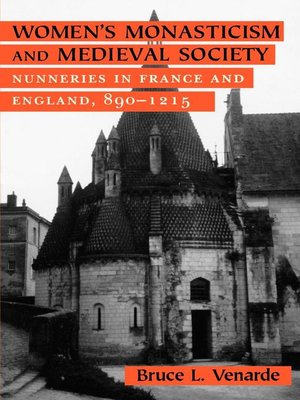Women's Monasticism and Medieval Society
ebook ∣ Nunneries in France and England, 890–1215
By Bruce L. Venarde

Sign up to save your library
With an OverDrive account, you can save your favorite libraries for at-a-glance information about availability. Find out more about OverDrive accounts.
Find this title in Libby, the library reading app by OverDrive.



Search for a digital library with this title
Title found at these libraries:
| Loading... |
In this engaging work, Bruce L. Venarde uncovers a largely unknown story of women's religious lives and puts female monasticism back in the mainstream of medieval ecclesiastical history. To chart the expansion of nunneries in France and England during the central Middle Ages, he presents statistics and narratives to describe growth in broad historical contexts, with special attention to social and economic change.
Venarde explains that in the years 1000–1300 the number of nunneries within Europe grew tenfold. In the eleventh and twelfth centuries, religious institutions for women developed in a variety of ways, mostly outside the self-conscious reform movements that have been the traditional focus of monastic history. Not reforming monks but wandering preachers, bishops, and the women and men of local petty aristocracies made possible the foundation of new nunneries. In times of increased agrarian wealth, decentralization of power, and a shortage of potential spouses, many women decided to become nuns and proved especially adept at combining spiritual search with practical acumen.
This era of expansion came to an end in the thirteenth century when forces of regulation and new economic realities reduced radically the number of new nunneries. Venarde argues that the factors encouraging and inhibiting monastic foundations for men and women were much more similar than scholars have previously assumed.
|In this engaging work, Bruce L. Venarde uncovers a largely unknown story of women's religious lives and puts female monasticism back in the mainstream of medieval ecclesiastical history. To chart the expansion of nunneries in France and England during the central Middle Ages, he presents statistics and narratives to describe growth in broad historical contexts, with special attention to social and economic change. Venarde explains that in the years 1000–1300 the number of nunneries within Europe grew tenfold. In the eleventh and twelfth centuries, religious institutions for women developed in a variety of ways, mostly outside the self-conscious reform movements that have been the traditional focus of monastic history. Not reforming monks but wandering preachers, bishops, and the women and men of local petty aristocracies made possible the foundation of new nunneries. In times of increased agrarian wealth, decentralization of power, and a shortage of potential spouses, many women decided to become nuns and proved especially adept at combining spiritual search with practical acumen. This era of expansion came to an end in the thirteenth century when forces of regulation and new economic realities reduced radically the number of new nunneries. Venarde argues that the factors encouraging and inhibiting monastic foundations for men and women were much more similar than scholars have previously assumed.






